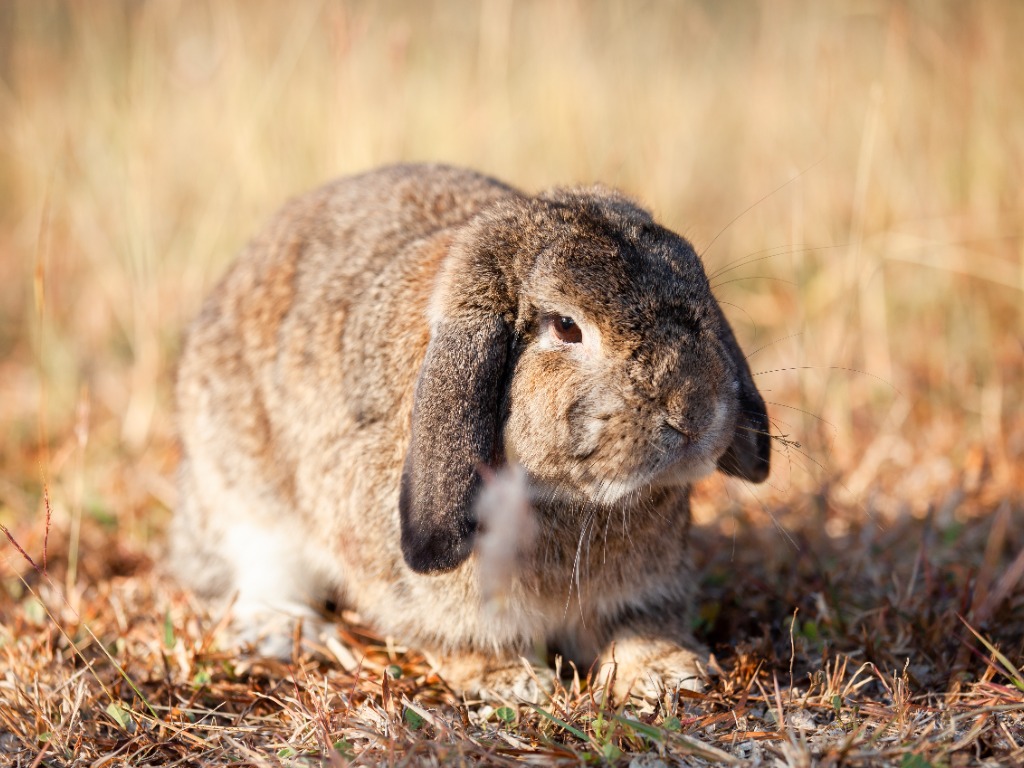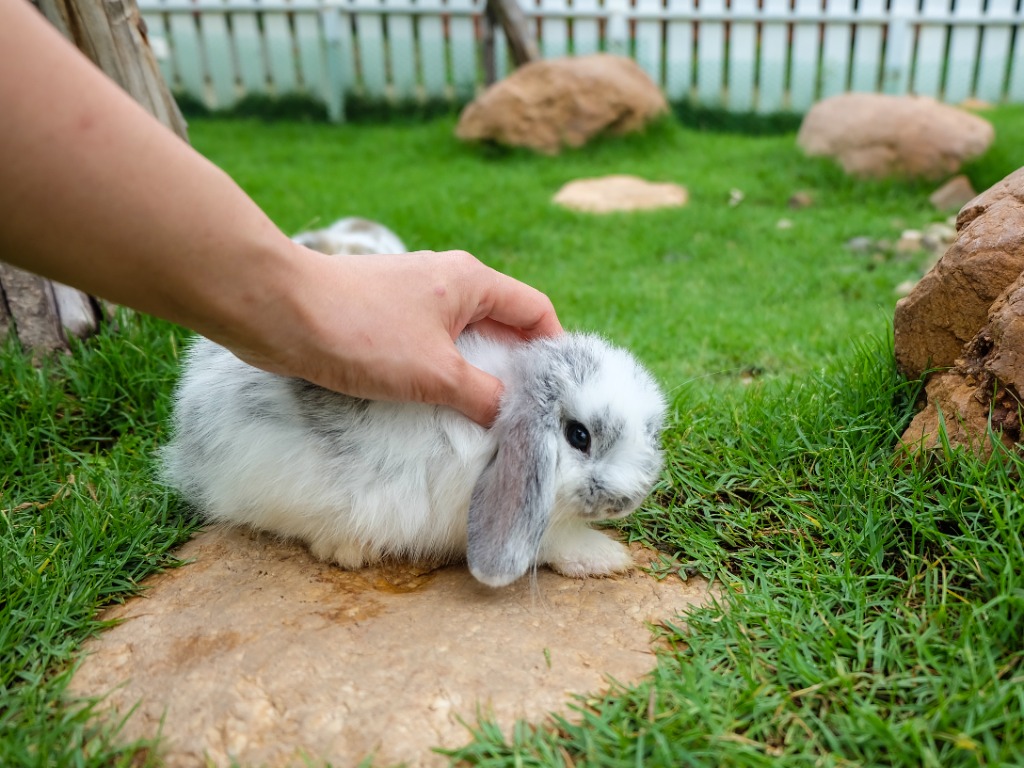How Big Do Holland Lops Get: A Comprehensive Guide
Holland Lops are a small breed of rabbits, known for their compact size and floppy ears. Adult Holland Lops typically weigh between 2 to 4 pounds (0.9 to 1.8 kg) and have a body length of 12 to 14 inches (30 to 36 cm).

Their petite size makes them ideal for families or people living in smaller spaces, as they require less room for housing and exercise. Despite their small stature, Holland Lops are energetic, friendly, and social pets, making them popular among rabbit enthusiasts.
Physical Characteristics
Size
The Holland Lop is a small rabbit breed with a compact and rounded body shape. They typically grow to be only 2-3 inches in height and about 5-6 inches long. Despite their small size, Holland Lops are sturdy and well-muscled.
Weight
When fully grown, Holland Lops generally weigh no more than 4 pounds. Females tend to be slightly larger than males. Because of their small size, they are often easier to handle and care for than larger breeds of rabbits.
Ears
One of the most distinctive physical features of the Holland Lop is their floppy ears. These rabbits have lop ears hanging on either side of their head. The ears are short and wide, giving the rabbit a cute and distinctive appearance.
Coat
The Holland Lop has a dense and soft coat that requires regular grooming to keep it healthy and free of tangles and mats. They come in various colors: black, blue, chocolate, and chinchilla. The coat is relatively short and does not require as much maintenance as some other breeds of rabbits.
In summary, the Holland Lop is a small and sturdy breed of rabbit known for its cute and distinctive appearance. They have a compact and rounded body shape, floppy ears, and a dense and soft coat in various colors. When fully grown, they typically weigh no more than 4 pounds.
Understanding Holland Lop Size Categories
Holland Lop rabbits come in various sizes, and it’s important to understand the different size categories when considering these adorable creatures as pets. Holland Lops can be classified into three main categories: show quality, brood quality, and pet quality. Let’s explore each category and the associated weight and height variations.
Show Quality Holland Lops
Show quality Holland Lops are bred to meet specific standards set by rabbit breed organizations. These rabbits are carefully selected for their ideal size and conformation, which includes their weight and overall body structure. The goal is to produce rabbits that exemplify the breed’s characteristics and adhere to the breed standard.
Regarding size, show quality Holland Lops typically weigh between 2 to 4 pounds (0.9 to 1.8 kg). When fully grown, they have a maximum height of around 11 inches (28 cm). These rabbits are generally compact, with a well-rounded body shape and short, sturdy legs.
Brood Quality Holland Lops

Brood-quality Holland Lops are rabbits that are primarily bred for reproduction purposes. While they may not meet the exact standards required for the show ring, they still possess desirable traits and contribute to maintaining the breed’s genetic diversity. Brood-quality Holland Lops can have slight variations in size compared to show-quality rabbits.
On average, brood-quality Holland Lops weigh between 3 to 4.5 pounds (1.4 to 2 kg) and have a height ranging from 10 to 12 inches (25 to 30 cm). They retain the characteristic compact body shape and short legs but may have slightly different proportions than show-quality rabbits.
Pet Quality Holland Lops
Pet quality Holland Lops are rabbits that do not meet the show or brood quality standards. These rabbits may have minor deviations from the breed’s ideal size or conformation but still, make wonderful companions and pets. Pet-quality Holland Lops often exhibit the same charming characteristics as their show and brood-quality counterparts.
In terms of size, pet quality Holland Lops can vary more significantly. They may weigh between 2.5 to 4.5 pounds (1.1 to 2 kg) and have a height ranging from 9 to 12 inches (23 to 30 cm). While they may not conform precisely to the breed standard, they can still have the adorable Holland Lop appearance, with their distinctive floppy ears and compact body structure.
Recognizing Size Variations within the Breed
It’s important to note that even within the defined size categories, there can be variations in individual rabbits. Genetics, diet, and overall health can influence a rabbit’s growth and development. Some Holland Lops may naturally fall at the higher or lower end of the size range for their category.
When selecting a Holland Lop, you must consider your preferences and expectations regarding size. Communicating with reputable breeders or experienced Holland Lop owners can provide valuable insights into specific rabbits’ potential size based on their lineage and genetic background.
By understanding the different size categories within the Holland Lop breed and recognizing the potential variations, you can make an informed decision when choosing a rabbit that fits your lifestyle and preferences.
Caring for Holland Lop Rabbits of Different Sizes
When it comes to caring for Holland Lop rabbits, size matters. Different-sized rabbits have unique needs and considerations that should be considered to ensure their well-being. Here are some essential guidelines to follow based on the size of your Holland Lop:
Special Considerations for Larger or Smaller Rabbits
Both larger and smaller Holland Lop rabbits require special attention in various aspects of their care. Here are some key considerations:
- Nutrition: Adjusting the diet is crucial for rabbits of different sizes. Larger rabbits may need more food to meet their nutritional requirements, while smaller ones may need smaller, more frequent meals to prevent overeating and weight gain.
- Exercise: Larger rabbits generally require more exercise to stay healthy and maintain a proper weight. It is essential to provide ample space for them to hop, run, and explore. On the other hand, smaller rabbits may not need as much space but still require regular exercise to prevent obesity and ensure proper muscle development.
- Handling: Handling larger rabbits requires more strength and support. Always be mindful of their weight and ensure a secure hold to avoid accidentally dropping or injuring them. Smaller rabbits may be more delicate, requiring gentler handling and a cautious approach.
Tailoring Housing and Exercise Based on Size

The size of your Holland Lop rabbit should be considered regarding housing and exercise arrangements. Here are some tips:
- Housing: Larger rabbits need spacious enclosures to move freely and stretch out comfortably. Consider providing a larger cage or a dedicated rabbit-proofed area to ensure their well-being. Smaller rabbits can be housed in relatively smaller enclosures, but they still have enough room to hop, stand up on their hind legs, and play.
- Exercise: For larger rabbits, provide plenty of supervised out-of-cage exercise time in a safe and secure area. This can include a rabbit-proofed room or a securely enclosed outdoor space. Smaller rabbits may also benefit from supervised exercise time, but their area can be smaller and closely monitored to prevent them from escaping or getting into dangerous situations.
Health Concerns and Preventive Measures
Different-sized Holland Lop rabbits may be prone to specific health concerns. Here are some preventive measures to keep them healthy:
- Obesity: Larger rabbits are more prone to obesity, which can lead to various health issues. Monitor their diet carefully, provide appropriate portions, and offer plenty of exercise opportunities. Smaller rabbits can also be at risk of obesity if overfed, so ensure their meals are appropriately portioned.
- Joint Problems: Larger rabbits may be more susceptible to joint problems due to size. Provide them with soft bedding and comfortable resting areas to alleviate any potential strain on their joints. Smaller rabbits are less prone to joint issues, but maintaining a soft and comfortable living environment is still essential for their overall well-being.
Remember, regardless of their size, all Holland Lop rabbits require regular veterinary check-ups, a balanced diet, and plenty of love and attention. By tailoring their care based on size and following these guidelines, you can ensure that your Holland Lop rabbit remains happy and healthy throughout their life.